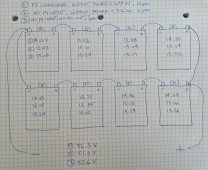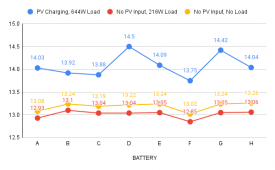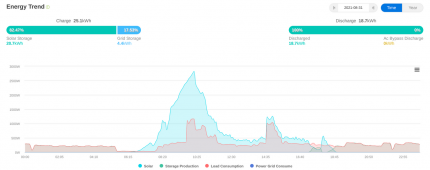I don't know for sure, but when I bought the batteries, I asked the guy I bought them from (supposed lead-carbon expert) about balance, and he said just hook them up and they will equalize as they charge.
I do have this load tester, it says it works on AGM. I use it mainly for starter batteries on motorcycles, for measuring CCA. I'll look into what else it can tell me...
I don't think a series string of AGM will equalize much, because we avoid charging at high enough voltage to equalize AGM. For FLA it is a normal, occasional, process.
Since you have two strings, you could isolate one string and then fully charge each battery of that string individually with an AC powered battery charger.
I have some older AGM automotive starting batteries which were getting weak and a bit low in resting voltage. (Automotive alternator regulator doesn't deliver correct voltage for charging AGM.) I fully charged them with automatic charging having AGM setting, then charged to 14.5V with 1A CC/CV power supply, then equalized with 15.5V 1A CC/CV. That did bring up rest voltage, but I haven't tested capacity or cranking amps.
"the battery voltage reached 56V by 10:30am, and stayed there for two hours until 12:30pm, when it dropped to 54V. It stayed right around 54V until around 5pm"
My AGM batteries (SunXtender) are supposed to be charged at least with 0.2C. If not, an extended absorption is recommended. Other people do say that lead-acid requires a
long charge time.
It looks like your PV array and battery capacity could achieve that charge current, but might not depending on illumination and loads.
If you suspect charging issue came with change from PWM to MPPT (which would have had different parameters most likely, and of course differ in on/off cycles vs. steady-state voltage), then try swapping back in the PWM and see what happens.
Whatever SCC you use, ideally you would have excess PV capacity and regulate lead-acid battery charging to the optimum current. With Victron that can be done, using a battery current shunt and a Victron controller (not sure which model and p/n). It will tell SCC to increase/decrease output meeting inverter power draw while holding battery current steady.







